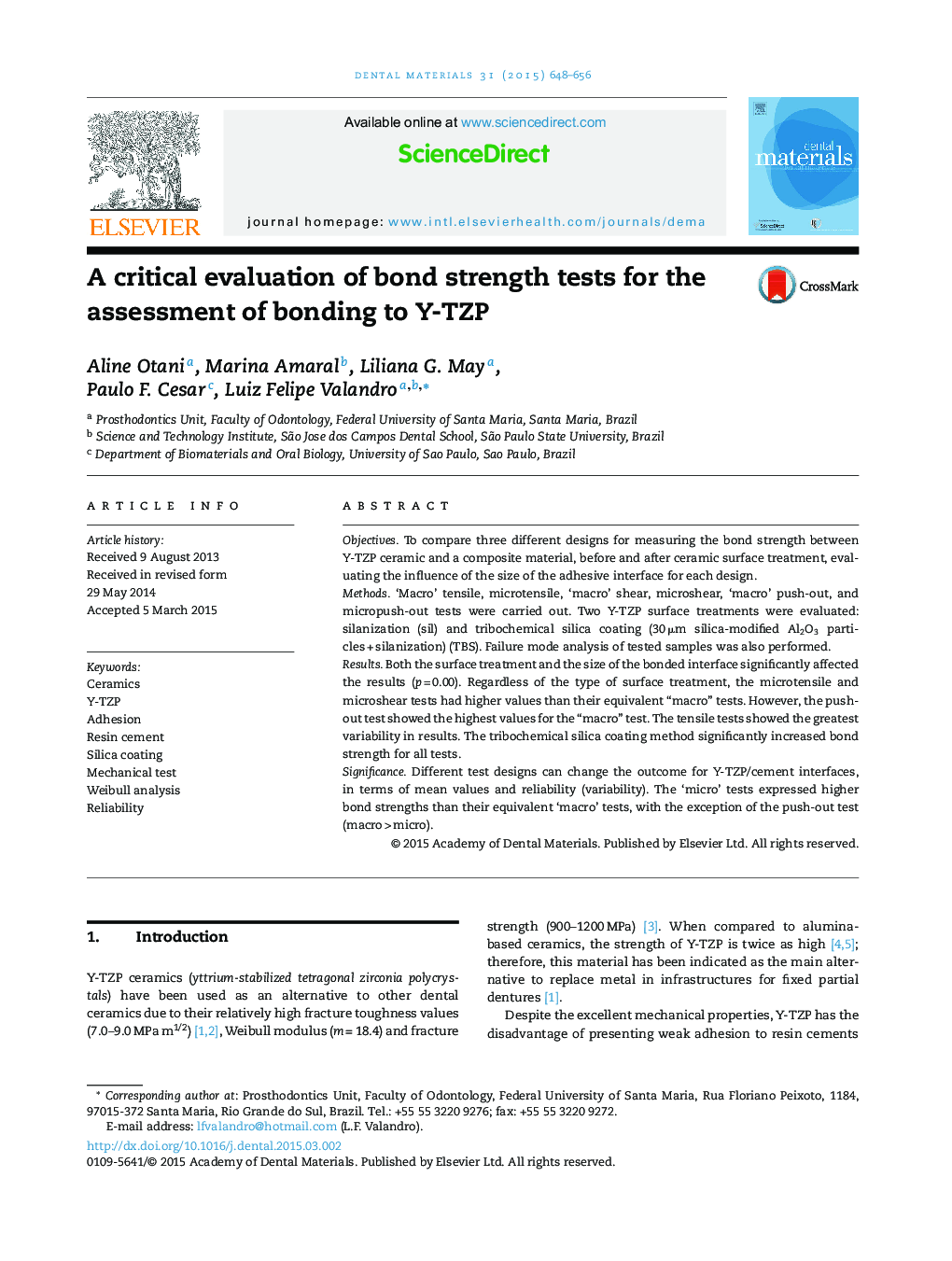| Article ID | Journal | Published Year | Pages | File Type |
|---|---|---|---|---|
| 1420658 | Dental Materials | 2015 | 9 Pages |
ObjectivesTo compare three different designs for measuring the bond strength between Y-TZP ceramic and a composite material, before and after ceramic surface treatment, evaluating the influence of the size of the adhesive interface for each design.Methods‘Macro’ tensile, microtensile, ‘macro’ shear, microshear, ‘macro’ push-out, and micropush-out tests were carried out. Two Y-TZP surface treatments were evaluated: silanization (sil) and tribochemical silica coating (30 μm silica-modified Al2O3 particles + silanization) (TBS). Failure mode analysis of tested samples was also performed.ResultsBoth the surface treatment and the size of the bonded interface significantly affected the results (p = 0.00). Regardless of the type of surface treatment, the microtensile and microshear tests had higher values than their equivalent “macro” tests. However, the push-out test showed the highest values for the “macro” test. The tensile tests showed the greatest variability in results. The tribochemical silica coating method significantly increased bond strength for all tests.SignificanceDifferent test designs can change the outcome for Y-TZP/cement interfaces, in terms of mean values and reliability (variability). The ‘micro’ tests expressed higher bond strengths than their equivalent ‘macro’ tests, with the exception of the push-out test (macro > micro).
